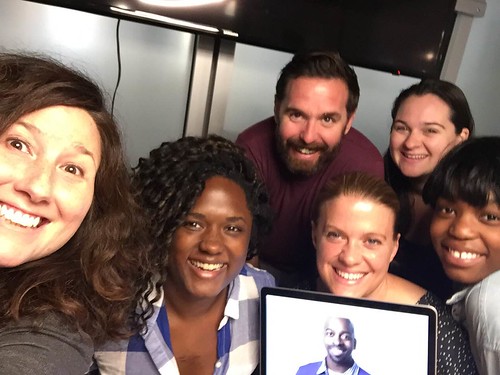
I am thrilled with the response to The Happy Healthy Nonprofit: Strategies for Impact without Burnout as my co-author and I have been sharing the ideas on a virtual book tour during the last month. One of our hopes for the book was that it would spark conversation about the need for self-care as part of doing the work. I was thrilled to see this blog SSIR blog post, Five Myths that Perpetuate Burnout Across Nonprofits by Ann-Sophie Morrissette..
As a trainer, one of the most exciting parts of working on a book is developing instructional materials based on the content and leading workshops to help put the ideas into practice. Over the past six months, I have been developing and piloting workshops on self-care and we-care as part of the leadership development training I do.
Last June, I facilitated a leadership workshop at the Americans for the Arts Conference where I tested some of the assessments and checklist tools in our book. Erika Atkins, Director of Operations at Opening Act, a theatre program that teaches theatre skills to students from New York City’s most underserved schools to help them succeed in life.
Erika approached me after the session to chat about her idea of adapting the workshop process as part of their staff retreat so staff could self-assess for burnout symptoms and then create self-care plans. I encouraged her and offered her some advice.
Erika’s organization is a small to midsize arts organization, with six full time staff members and an operating budget of less than $1 million. Their program includes about teaching artists. Erika says, “We’re a very small staff that does a lot of big things (16 programs, Summer Conservatory, a large social media campaign , and a gala for 500), so sometimes we stretched really thin. Before I attended your workshop, we had spent months trying to think of better ways to take care of ourselves during stressful times.”
Opening Acts executive director also understood the importance of creating a workplace culture of wellbeing or what we call in the book, “We-Care.” Erika says it did not take much convincing when she proposed the idea of having staff create self-care plans at the staff retreat. Says Erika, “My executive director already felt the need for us to have a written policy in place, so she was excited when I told her I got a bunch of ideas from the workshop. She knows self-care is important to avoiding burn out and keeping a high staff retention. “
Before their annual staff retreat, Erika discussed the takeaways from the workshop with her executive director and some ideas of how to apply it. At the staff retreat, they used assessments from Chapter 3 of The Happy Healthy Nonprofit and had everyone self-assess their symptoms. Then had a group conversation about what people were open to sharing.
Opening Acts executive director then shared a list of ideas. These were organized into different categories: Organizational Wide, Self-Care Group, Individual. Then we had the whole staff brain storm together. They also used the self-care checklist in Chapter 3 to help staff members determine what types of self-care activities should be in their plan. Each employee created their own plan. Each employee will be checking in with their supervisor during their weekly meetings to make sure are trying to follow their plan.
After going through this process, Erika had the following advice: Give your team permission to be open and honest about what they need to be happy in the work place! Says Erika, “I know it seems like a lot of extra work, but so much better to have a plan in place so that when things get crazy in your office you have go to strategies to help everyone feel less burnt out individually and as a team.”
Does your nonprofit have a culture of wellbeing? How did your organization create it? How do you sustain it when times are crazy?
Beth Kanter is a consultant, author, influencer. virtual trainer & nonprofit innovator in digital transformation & workplace wellbeing.

Leave a Reply